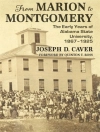During the Seven Years‘ War (1755 63), a number of independent light-infantry outfits served under British command and dedicated light companies were added to the British Army’s regular infantry battalions. The light companies were disbanded after the war but the prominent role played by light infantry was not forgotten, and in 1771 72 light-infantry companies were reinstated in every regiment in the British Isles. Although William Howe formed a training camp at Salisbury in 1774 specifically to practise light-infantry doctrine, the outbreak of the American Revolution in 1775 found the British Army wanting, and the light companies were no different. After evacuating Boston in March 1776, Howe began to remodel and drill his army at Halifax, standardizing lighter uniform and emphasizing more open-order tactics. He also brigaded his light companies together into composite battalions, which went on to fight in almost every major engagement during the American Revolution. They spearheaded British assaults, using night-time surprise and relying upon the bayonet in engagements such as Paoli and Old Tappan. They also matched their regular and irregular opponents in bush-fighting, and at times fought in far-flung detachments alongside Native American and Loyalist allies on the frontier. Featuring specially commissioned full-colour artwork, this book offers a comprehensive guide to the formation, uniform, equipment, doctrines and tactics of these elite light infantry companies and battalions, and considers how, over the course of the war they developed a fearsome reputation, and exemplified the psychological characteristics exhibited by crack military units across history.
Robbie MacNiven
British Light Infantry in the American Revolution [EPUB ebook]
British Light Infantry in the American Revolution [EPUB ebook]
Dieses Ebook kaufen – und ein weitere GRATIS erhalten!
Sprache Englisch ● Format EPUB ● Seiten 64 ● ISBN 9781472842503 ● Verlag Bloomsbury Publishing ● Erscheinungsjahr 2021 ● herunterladbar 3 mal ● Währung EUR ● ID 7484552 ● Kopierschutz Adobe DRM
erfordert DRM-fähige Lesetechnologie












